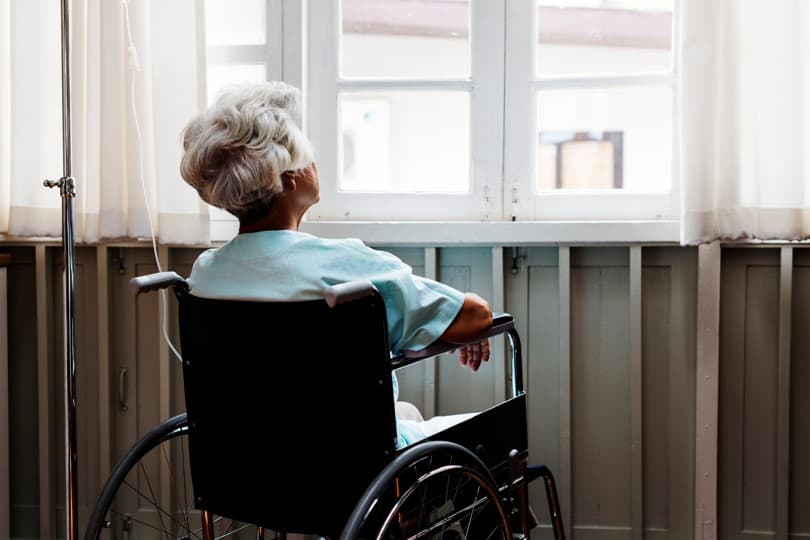
Fall Prevention for an Aging Population
For elderly patients, a fall prevention program in the hospital, and at home, is crucial. While in the hospital, older people are more likely to experience decreased mobility as they are confined to their hospital beds. Even if they do not fall while in this hospital–and many patients do–they are statistically more likely to fall within one month of returning home due to decreased mobility. While it is standard for hospitals to enforce elderly fall prevention programs, it is equally vital that patients update their homes to reduce fall risk.
Leading Cause of Injury Death
According to the CDC, falls among adults aged 65 and up resulted in more than 34,000 deaths in 2019 –and the number of elderly falls is increasing. In fact, falls are the leading cause of injury or death for people in that age group. There were three million emergency room visits due to falls in older adults. The cost of elderly fall-related injuries is huge. As of 2019, such falls in older adults cost $50 billion annually, with Medicare and Medicaid paying for ¾ of the costs.
How Nurses Can Prevent Hospital Falls
Up to one-third of hospital falls are preventable, and nurses play a key role. Communication between nurses and patients is paramount to ensuring patient safety. It is incumbent upon nurses and other hospital personnel to have a fall prevention plan in place based on the individual’s risk factors. As part of the fall prevention plan, the nurse should go over the following with the patient:
- Familiarize the patient with the environment.
- Show the patient how to use the call button.
- Ensure the call button is in easy reach.
- Keepthe patient’s personal possessions in close.
- Emphasize that the patient should wait for assistance before attempting to get out of bed.
The attending nurse should be responsible for adjusting the patient’s bed to the appropriate height. If a patient on a gurney or wheeling bed is left unattended, ensure that the brakes are in the locked position. Nurses also prevent hospital falls by making sure that patient care areas are free from clutter and spillage. Working night lights and nonslip footwear are also helpful tools.
Checking in on patients hourly is a critical factor in hospital fall prevention. Hourly rounding addresses patient needs such as toileting assistance or medication administration. Regular need assessment is especially crucial when dealing with elderly patients or those with dementia.
Preventing Falls at Home
Ways to prevent elderly falls at home include:
- Look at the floors in every room–If the elderly person must walk around furniture, try to move it so their path is clear. Throw rugs are a serious trip hazard. Either remove them or use double-sided tape on the backing to reduce slipping risks. Get rid of any clutter on the floors. Make sure wires and cords are taped next to the wall to avoid this potential trip hazard.
- Stairways and steps–Again, remove any objects on the stairs. Fix any broken or uneven stairs and steps. If there is carpeting, make sure it is attached to every step. If it is torn or loose, remove the carpeting and replace it with non-slip rubber treads. Repair or replace any loose handrails. Check to see if the lighting is adequate. If not, install brighter light bulbs. Light switches are necessary at the top and bottom of the stairwell. An electrician can put light switches in both locations.
- Kitchen–Move frequently used items off high shelves. Keep such items at waist level. If a step stool is necessary, get a stool designed for that purpose with a bar to hold onto. Never use a kitchen chair as a step stool.
- Bathroom–Put non-slip mats or strips on the tub or shower floor. Have grab bars installed next to the toilet and tub in case support is needed.
- Bedroom–Ensure that lighting is sufficient. Place lamps close to the bed where they are in easy reach. A night light is useful whenever the room is dark.
Other Fall Prevention and Safety Tips for Patients
Some simple tips can literally make the difference between falling and staying upright. Wear shoes with good traction while in the house always, avoiding slippers or going barefoot. Have your eyes checked by your eye doctor at least annually and upgrade glasses when recommended. Add lighting to dark rooms or areas. Finally, consider wearing an alarm that connects to a local emergency responder. Any step you take to further safety is always worth taking.
Equally important to elderly fall prevention in hospitals is the adoption of modern patient monitoring technology that uses intelligent motion detection and machine learning to provide staff with additional lead time to reach a patient. This early warning system is proven to dramatically reduce patient fall rates and helps reinforce a culture of patient safety in healthcare facilities. For more information, contact CareView today and request a demo of our leading-edge services.